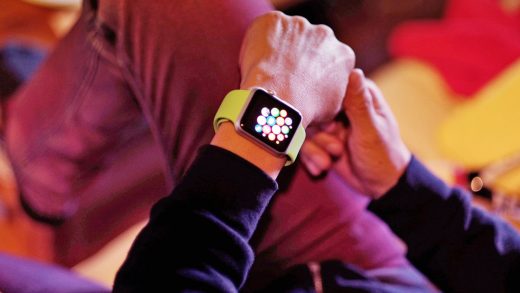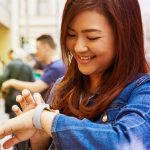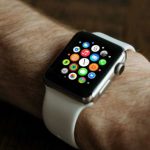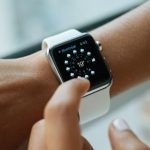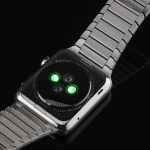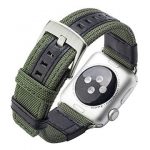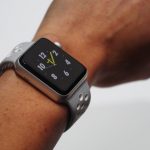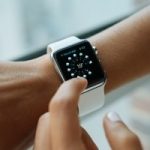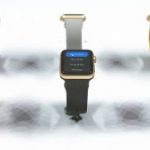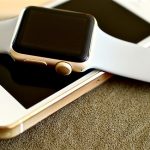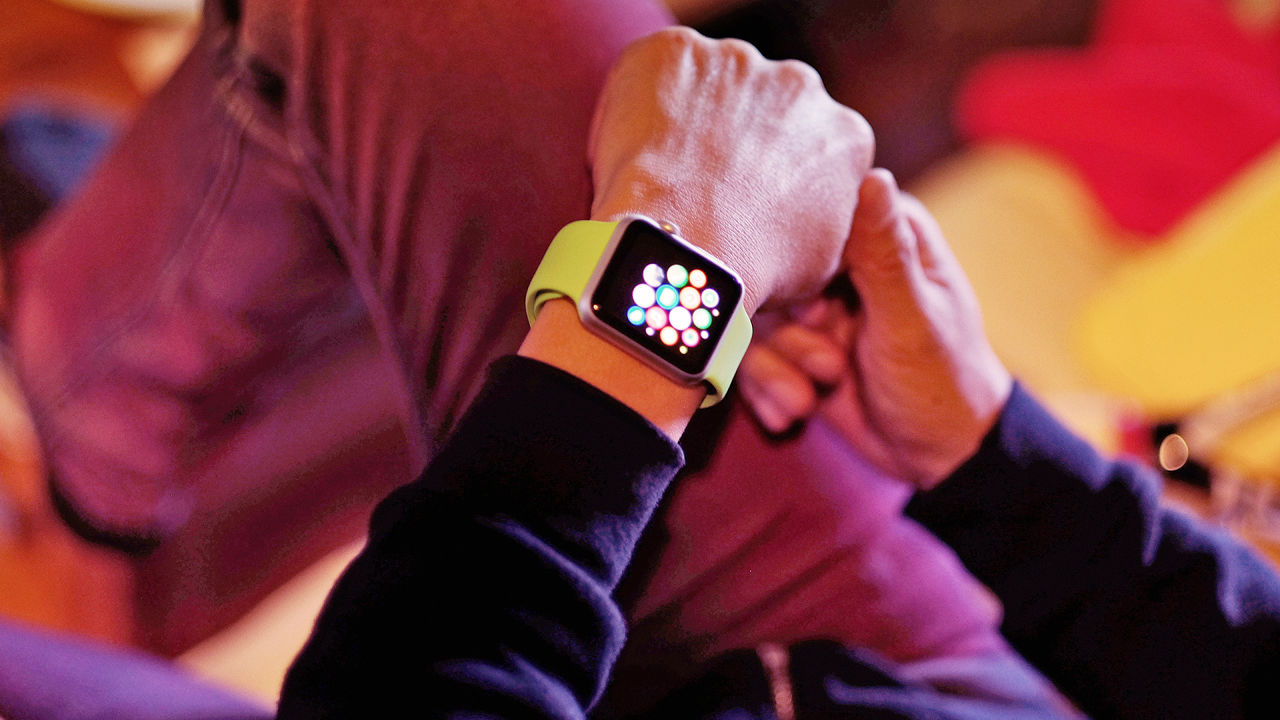The Apple Watch App For Seizures May Soon Predict Their Onset
Shaina Mims was diagnosed with epilepsy after having a seizure at work in 2008, and she’s lived with seizures ever since.
They’ve taken a toll. Not the bruises or bitten tongues that come with grand mal seizures—Shaina has “partial complex” seizures that affect only part of the brain—but an emotional toll, which in some ways is far worse.
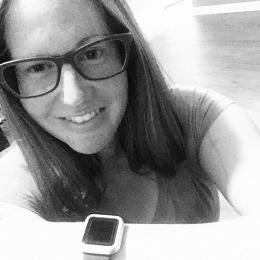
The 31-year-old lives with a disease whose hallmark is “chronic… recurrent, unprovoked seizures,” as the Epilepsy Foundation defines it. So, like many who have the disease, she deals with “seizure fear,” or the generalized anxiety of knowing an episode could come at any time and with little or no warning. She worries about having a seizure in public, or in a group of people she doesn’t know well, or while she’s driving.
But the dominant emotion Shaina feels is the raw embarrassment that comes just after a seizure. The idea of people, even strangers, witnessing her staring blankly forward, her leg stiffening, and her arm cramping into a hand-puppet posture, as she described it, is deeply upsetting to her, she told me. “I would just sit there and cry because I couldn’t remember what happened,” she says.
In a clinical sense, a person with epilepsy needs about 10 minutes to recover from a seizure. But Shaina says it’s really about an hour before she fully comprehends what happened.

I first became aware of Shaina after I saw her in an Apple sizzle video that featured her wearing an Apple Watch running an app called EpiWatch. The implication in the video was that the Apple Watch and the app were giving Shaina some heads-up time before her seizures hit.
I was touched by it. I’ve known a couple of people who have epilepsy, but nobody in my immediate family or inner circle of friends. But it made me think about how it must be to live with a disease that can send a storm of electricity through the brain literally at any time, sending the body into convulsions, and the mind into a blackout. Evil, really evil, I thought. And this little app, it appeared, might truly bring relief from the nagging “seizure fear” that Shaina and many other epilepsy patients feel.
I was at least partially correct.
To learn more about EpiWatch, I visited Johns Hopkins in Baltimore to meet the two researchers who created it, Dr. Nathan Crone and Dr. Gregory Krauss. Both men are neurology professors at the Johns Hopkins University School of Medicine.
The two men (patiently) warmed me up on the the basics of epilepsy and the concept of using technology, wearable tech in particular, to help people living with the disease.

Researchers and developers, as it turns out, have been trying for years to create some kind of device that can predict when a seizure is coming. Some have tried using wearable devices to detect familiar patterns in biometric data recorded just before an episode. Numerous predictor and tracker apps have been developed. Reams of research paper generated. Some researchers have tapped directly into the brainwaves to search for the predictive patterns in brain waves that occur before a seizure. Others have turned to the sensory perception of dogs to predict seizures.
But despite all the time and money invested by people and institutions around the world, Crone and Krauss say, a dependable method of detecting seizures has remained elusive. Epileptic seizures are, by nature, very unpredictable. And so far, our best technology and science hasn’t changed that.
That’s exactly why patients like Shaina are so important in the research happening at Johns Hopkins. She is one of a select group of patients who feel an “aura,” a natural, if somewhat mysterious, early warning system that activates just before the onset of a seizure.
Auras are unique to every person, Shaina tells me, and they’re hard to describe to anyone who hasn’t felt one.
“I usually feel as if I’m on a merry-go-round and the only thing spinning is my mind,” Shaina says. At other times Shaina has a “dizzy, airy” feeling like she’s in a tunnel and there’s air blowing through her head.
In general, people who have auras can record more data because the time between the start of the seizure and full recovery is greater. Specifically, they can begin recording a seizure’s effects on the body and mind sooner after onset, and therefore may be able to uncover vital biometric markers that show up in the very early stages of the seizure.
The discovery of such markers could be the key to early detection in other types of epilepsy patients. “Particularly in the most severe types of seizures, to detect the seizure when the patient’s not even aware of it is our goal,” Krauss says. It’s these severe seizures, like grand mal seizures, that can be particularly dangerous to the health of the patient. Nocturnal seizures fall into this class, too.
Previous wearable devices used for detecting seizures were of limited value because their sensors weren’t accurate enough, and because their user interfaces didn’t facilitate the kind of user interaction that’s needed from the patient.
So when Apple entered the market with its own wearable, the Apple Watch, in 2015, Crone and Krauss took notice.
“[The Watch] had all the same kinds of sensors that people had been investigating, but also has a really rich user interface, so we started thinking creatively about how to use that,” Crone says.
So armed with a better device and the hard lessons of past research, Crone and Krauss set about developing an Apple Watch app focused on detecting—not predicting—seizures, especially in people like Shaina who have a natural early warning system (auras).
“We thought in particular [the Watch] would be really good for testing a seizure detector,” Krauss says, [for patients] to interact with the seizure detector to tell it whether it’s right or not.”
EpiWatch, from the user’s perspective anyway, is a pretty simple app. Since people with epilepsy lose some degree of awareness, or else pass out completely, during a seizure, the app asks questions of the Watch wearer to find their awareness level. Rapid heart rate and convulsive body movements are also markers, so the app uses the Watch’s sensors to detect those things too.
At the beginning of a seizure, when the patient feels an aura, they tap the lightning bolt icon (or “complication”) to start the app. This immediately activates the Watch’s sensors, which begin collecting heart rate and body movement data. EpiWatch uses a combination of (subjective) patient response data and (objective) sensor data to detect and measure a seizure.
A sudden or rapid increase in heart rate is a key hallmark of a seizure. The Apple Watch uses a pair of green LED lights paired with light‑sensitive photodiodes on its underside to detect changes in the volume of blood running through the wrist. This provides a reasonably accurate look at the user’s heart rate.
“The majority of seizures are associated with changes in heart rate, the most dangerous ones in particular,” Crone says.
But sudden elevations in heart rate can be caused by other things, too, like experiencing a fright, or exercising, or drinking caffeine. So heart rate alone, no matter how accurate, isn’t enough to positively detect a seizure.
At the same time the heart rate monitor turns on, the motion sensors inside the Watch also begin collecting data, measuring body movements like tremors or convulsions. This is very tricky business. Part of the great challenge of making a seizure-detecting app is writing the algorithms that define how various kinds of seizures might affect the movement of the user’s wrist, where the Watch is. Even with the careful refinement of these algorithms, the six-axis accelerometer/gyroscope inside the Watch still isn’t enough to definitively detect a seizure on its own.
It’s the patient’s awareness levels that give the sensor data context and meaning, and the EpiWatch relies on the person wearing the Watch to provide that data. The app gives the user a couple of (deceptively) simple tests to measure their awareness, the systematic loss of which is a key indicator that a seizure is in progress.
In the first test, the app shows a big blue button on the Watch screen and asks the user tap on it to make it go away. After another few seconds, a second, more difficult, test appears. This one presents a simple sequence of numbers (always 1, 2, and 3) on three blue squares; the patients is asked to mimic the sequence by tapping on the squares.
These tests occur repeatedly over the course of the seizure. As the user loses, then regains, awareness, a picture forms of the duration and severity of the seizure. Most seizures are about 1-3 minutes, while recovery time can last up to 10 minutes, Krauss says. The end of the seizure might be marked by the return of the person’s ability to quickly tap the blue button.
The app’s detection power comes from combining the biometric data collected by the heart rate sensor and movement sensors with the user awareness data provided by the user.
“If they’re not aware for five minutes and their heart was racing, you can be fairly sure they were having a seizure,” Krauss says.
“We think we can detect seizures based on convulsions, or on the ability to respond to the app when the app detects a heart rate change,” Crone says.
Still, as of a month ago, EpiWatch was detecting seizures that weren’t really happening in test patients. But Crone and Krauss said they’re excited when patients wave off the false positives because they expose faults in the algorithms, which can then be corrected.
One of the biggest challenges in treating epilepsy is the problem of missing, contradictory, or false information coming from the patient and their family. This is nobody’s fault; it’s simply a vexing aspect of a disease that affects the very part of the brain that remembers things.
People with epilepsy often have a skewed memory of the facts of a given seizure, or they can’t remember that one has occurred at all. As many as 40% of epilepsy patients don’t remember they had a seizure after one has occurred, and some vehemently deny it, Crone tells me.
When such a patient happens to be wearing a Watch, Crone tells me, there may be times when the data from the sensors contradicts patient’s own version of events. Many times, the sensors are right and the patient is wrong.
And it’s not just the user providing the bad information. Megan Conroy, founder and CEO of the smartphone-based medical imaging platform CaptureProof, says even the information coming from the patient’s family members is often incorrect or misleading.
“There’s a ton of unreliable patient data coming from the family, especially during stressful situations,” she says. Their words form a subjective version of events.
And the language used to express the nuances of the disease comes with its own set of problems. “Your twitch and my shake and another person’s tremor could be very different,” Conroy says. “These are only words, all we have is English to describe these things.”
The subjective information coming from patients and their families is still very important, but there may be situations where caregivers will default to the sensor data for real version of events.
The introduction of any objective data is an improvement to the current system. Right now many patients report their seizure activity to their doctors by giving them a piece of paper with a bunch of dates and times scribbled on it, Dr. Crone says.
EpiWatch doesn’t automatically send data to a dashboard that a doctor could see, but the patient can choose to show a doctor their EpiWatch dashboard on their smartphone during an exam.
The app could also change the way people with epilepsy notify loved ones that they’re having a seizure. Shaina says she used to send texts to her husband when she felt a seizure coming, but the seizure often began before she could type the message correctly. Her husband would get a text like hjhjgachnssbb08y. “It looked like a little kid was playing with my phone,” she says. Now, when Shaina starts tracking a seizure in EpiWatch, her husband is automatically notified.
Almost 500 patients around the U.S. are now wearing an Apple Watch and using the EpiWatch app daily. They’ve all agreed to share their usage and seizure data, in an anonymized form, with the Johns Hopkins researchers.
Krauss and Crone took advantage of Apple’s ResearchKit framework to locate, pre-screen, and collect data from study participants. Study participants were asked to provide their own Watch and download the app from the App Store.
Some of the study participants come to the Epilepsy Clinic at Johns Hopkins in Baltimore to be observed wearing the Watch and using the app. During times when no researchers or other caregivers are in the room, patients are constantly monitored on a bank of screens in a small room nearby. When a seizure occurs, either the patient or a caregiver turns on the app, causing the Watch to start recording data from its sensors.
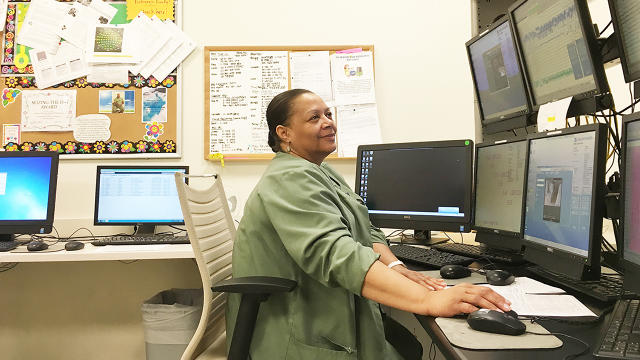
The end game for EpiWatch is to increase the quality of life for people living with epilepsy. Part of that is just taking some of the anxiety out of dealing with seizures. High numbers of people living with epilepsy suffer from depression and anxiety—partly the result of biochemical reactions related to the disease itself, and partly from “situational” things like seizure fear, Krauss tells me.
If nothing else, the app will get those living with epilepsy more involved in managing their disease by tracking seizure activity in both a personal and scientific way, and thus shifting their role from passive victim to active observer.
The Johns Hopkins researchers have been collecting the research that will underpin the app since 2015, and now believe they are just a few months away from offering a working seizure detector.
Such an app could be a life-changer for people living with epilepsy.
“A seizure detector might encourage patients . . . to go out and do things by themselves maybe that they wouldn’t otherwise do, or maybe their parents would feel more comfortable leaving them alone, or maybe their spouse would be able to leave them alone,” Crone says.
“That could affect quality of life in a big way.”
Fast Company , Read Full Story
(34)

